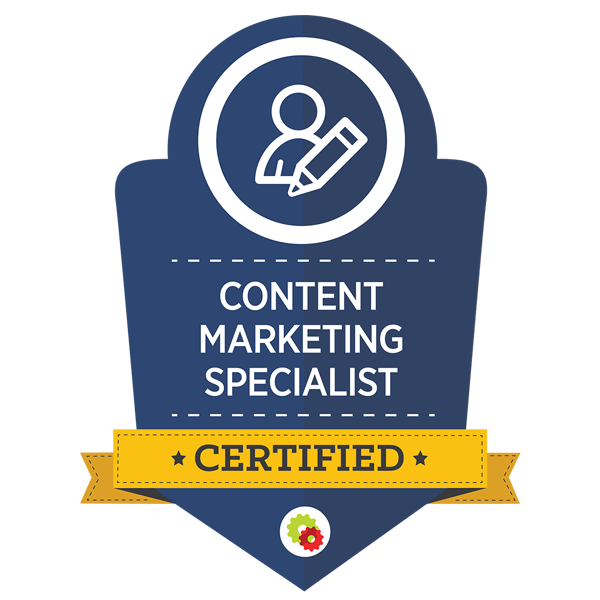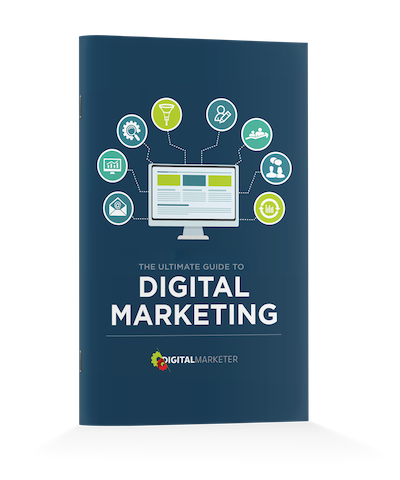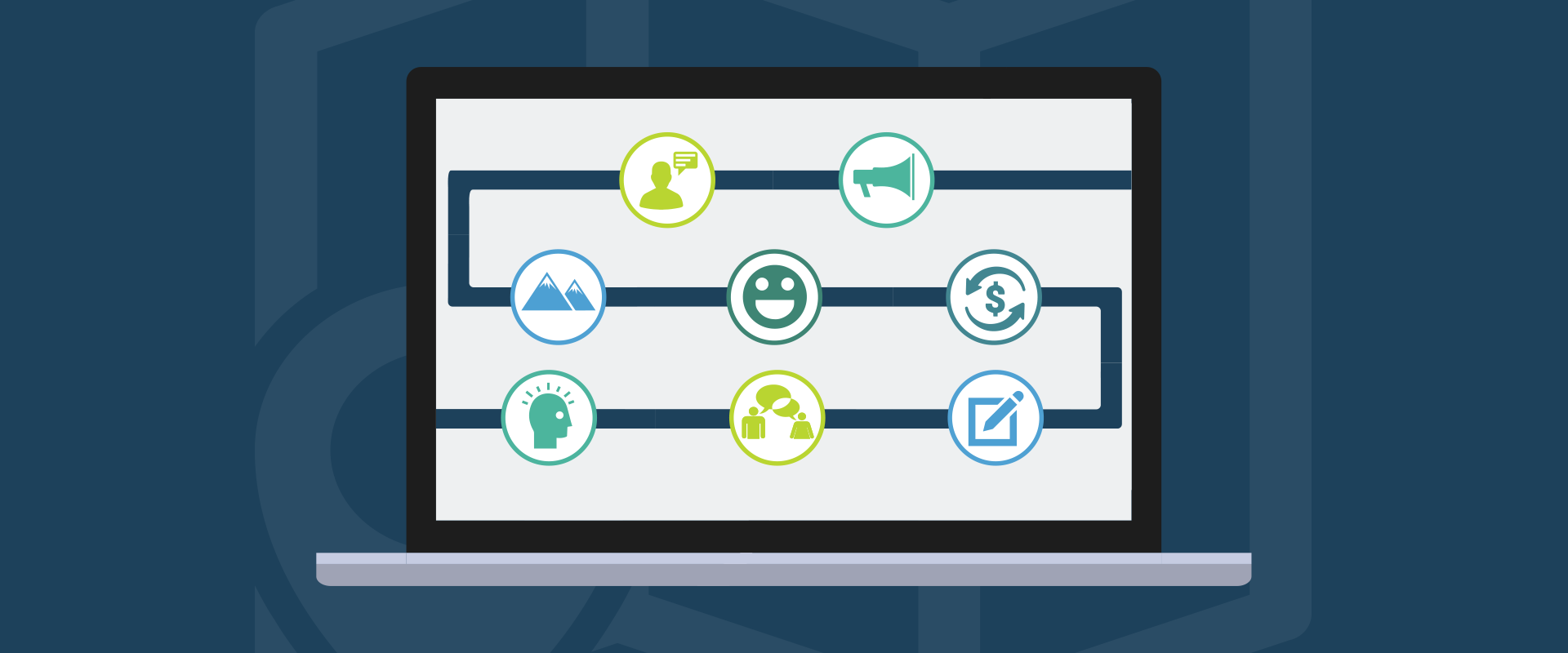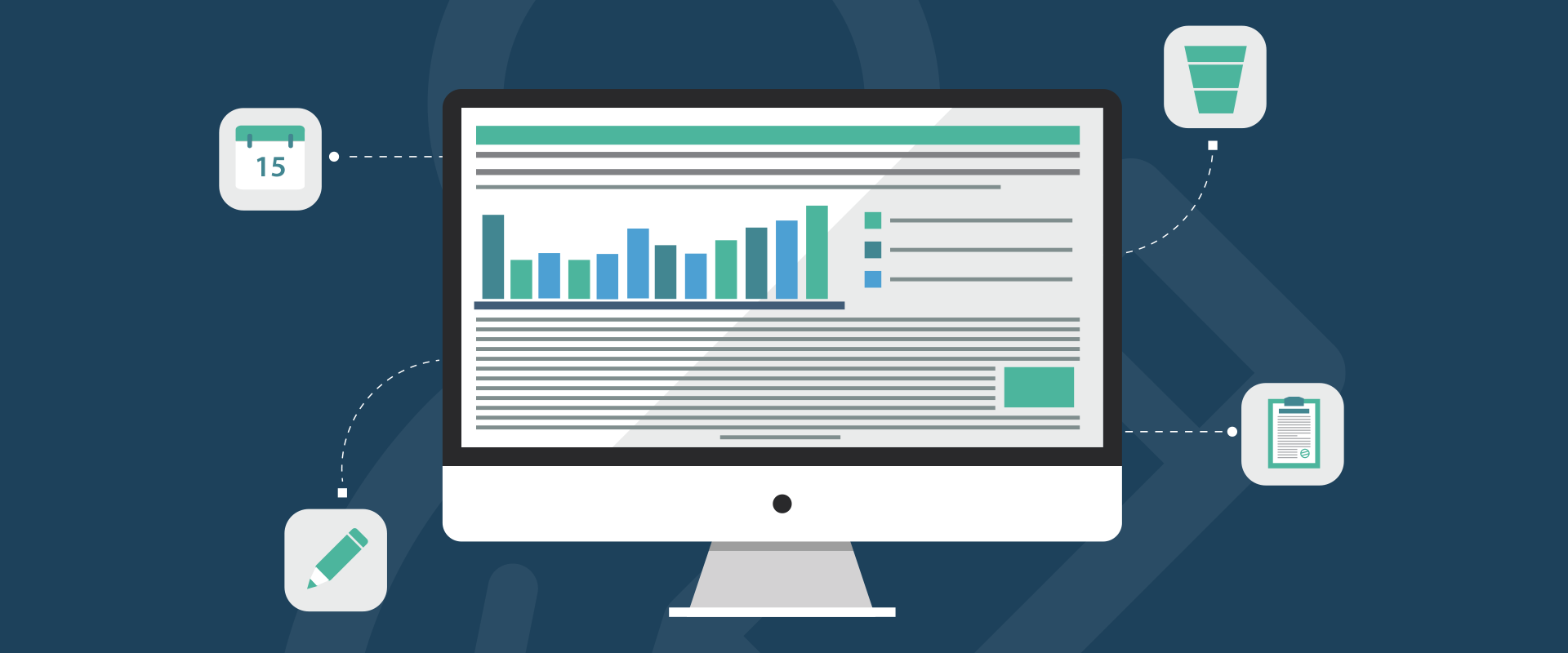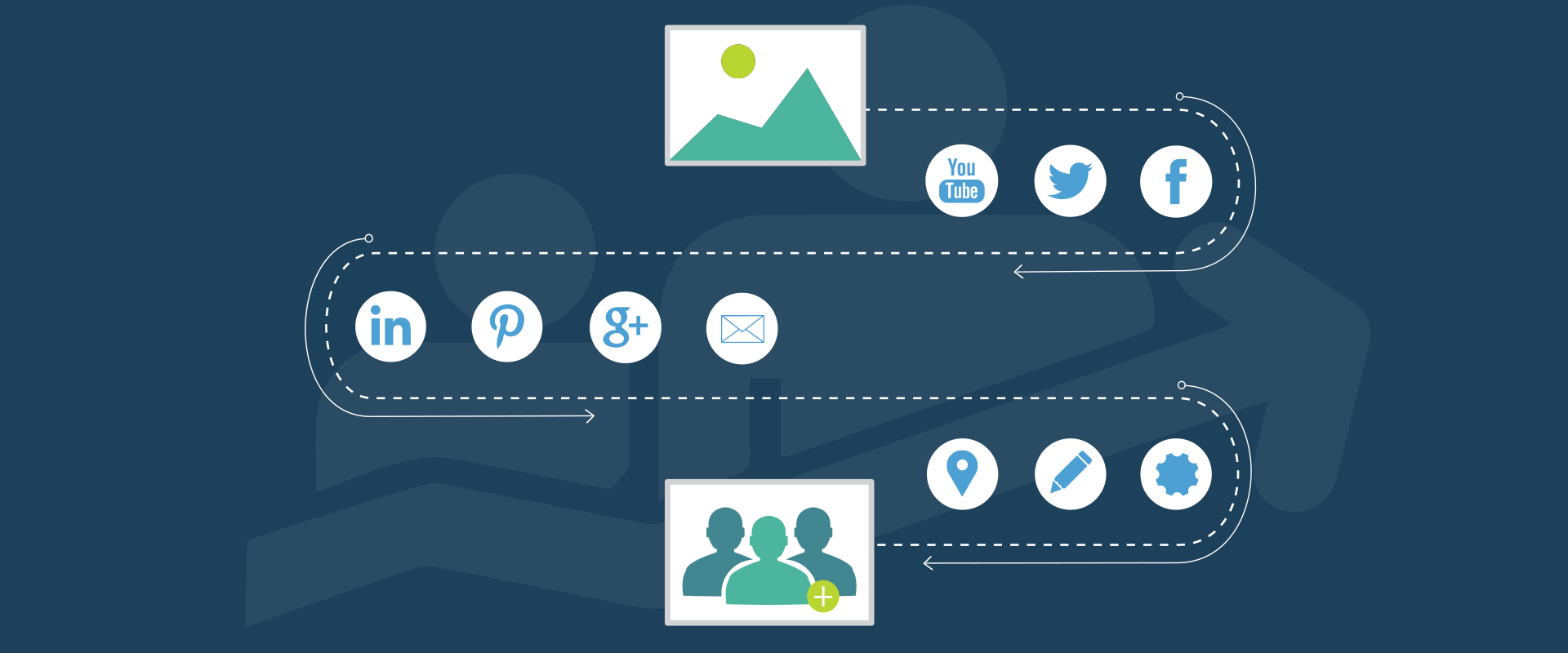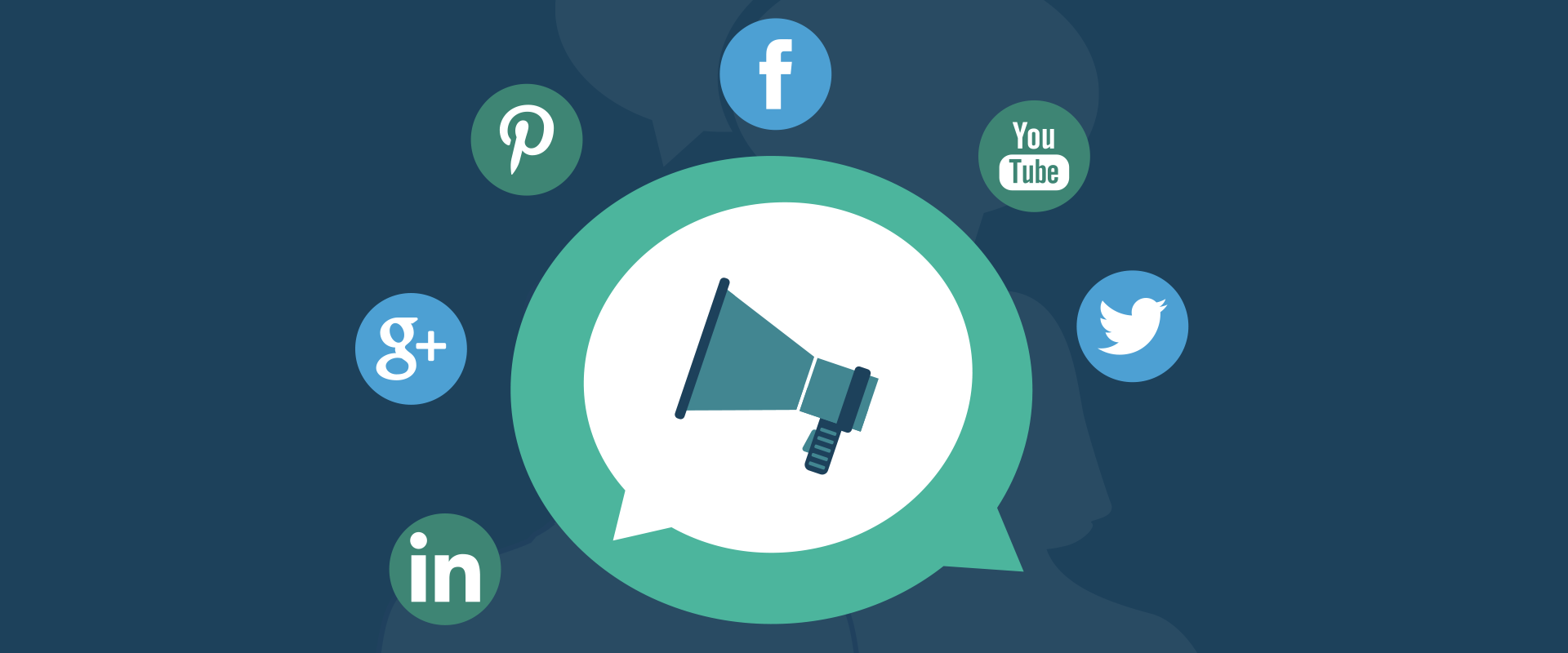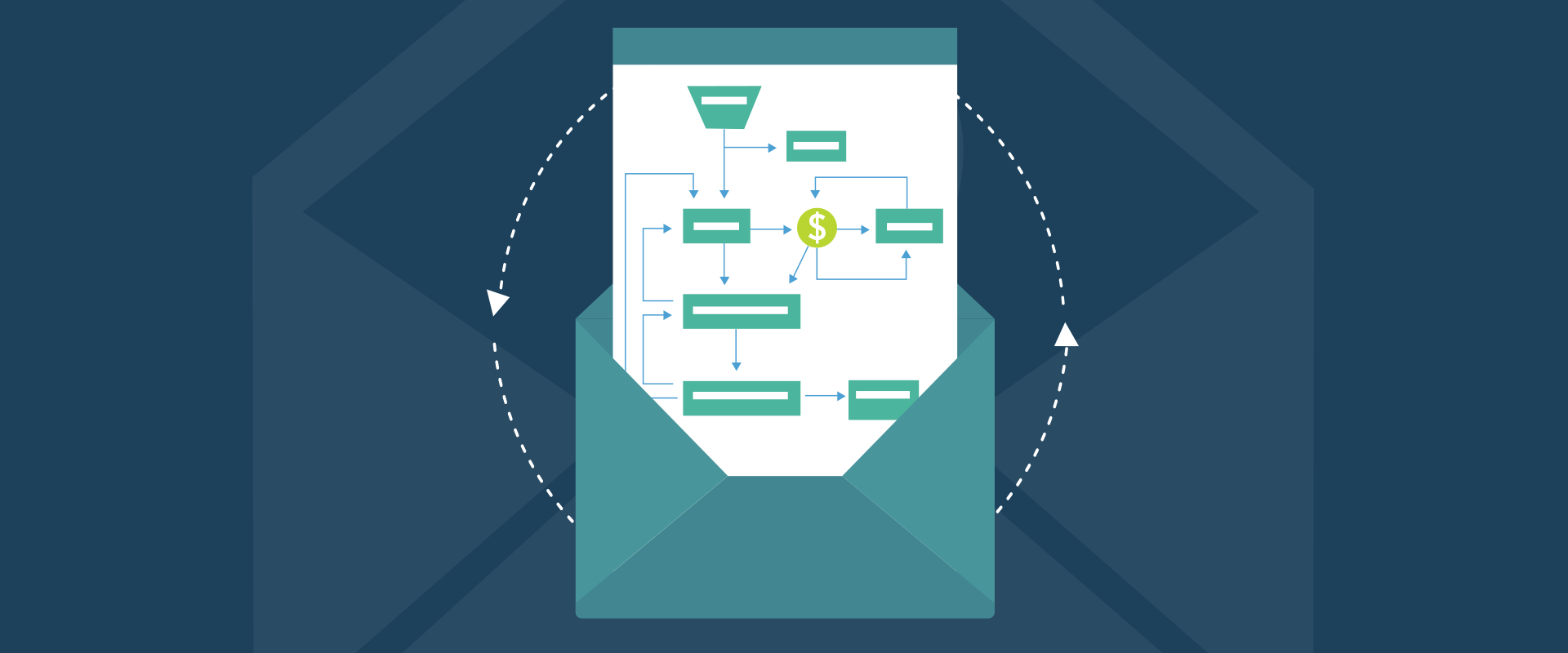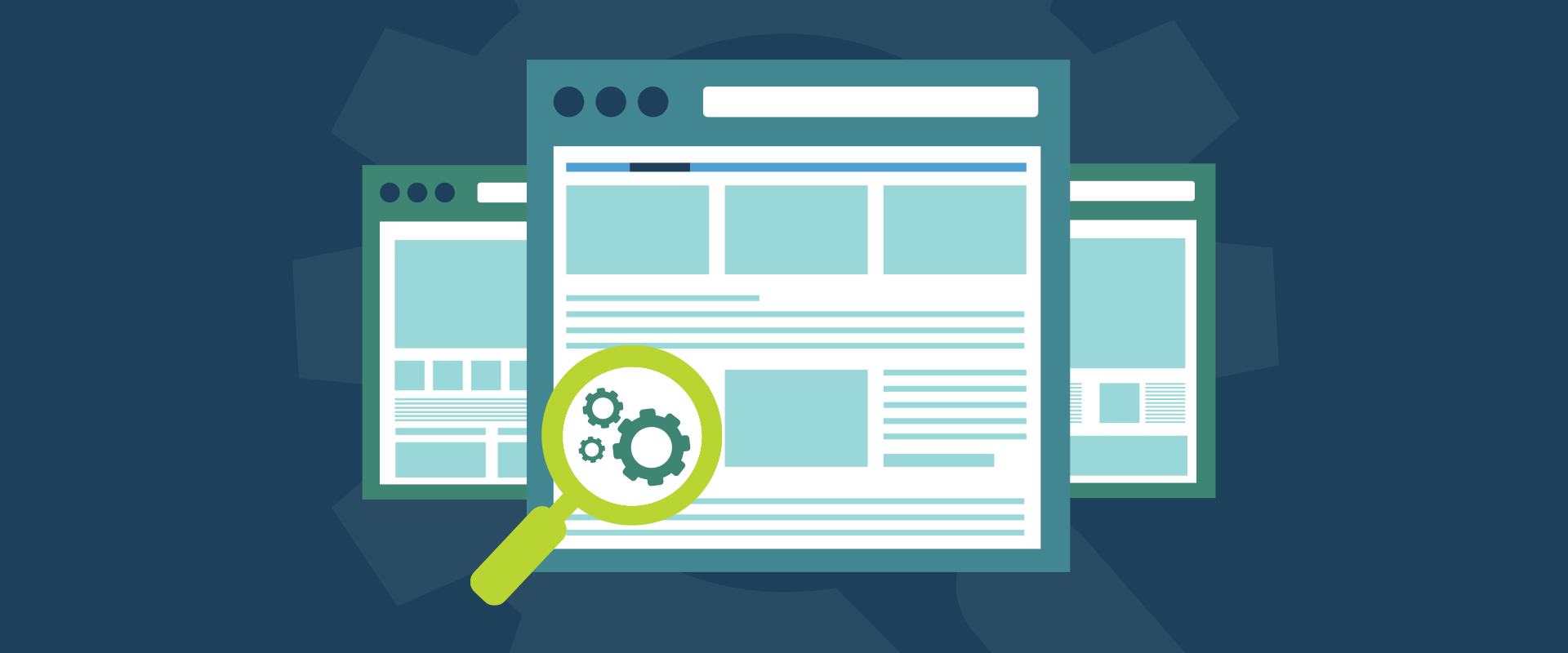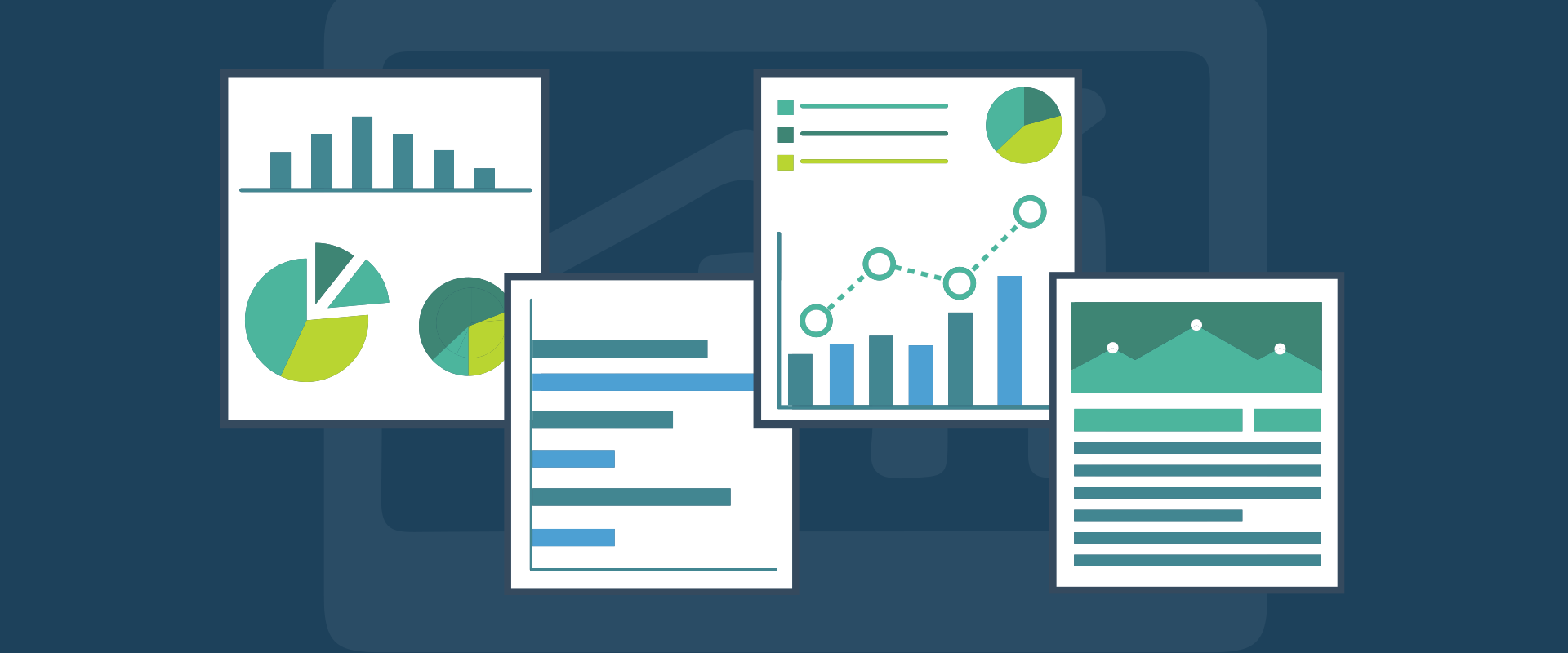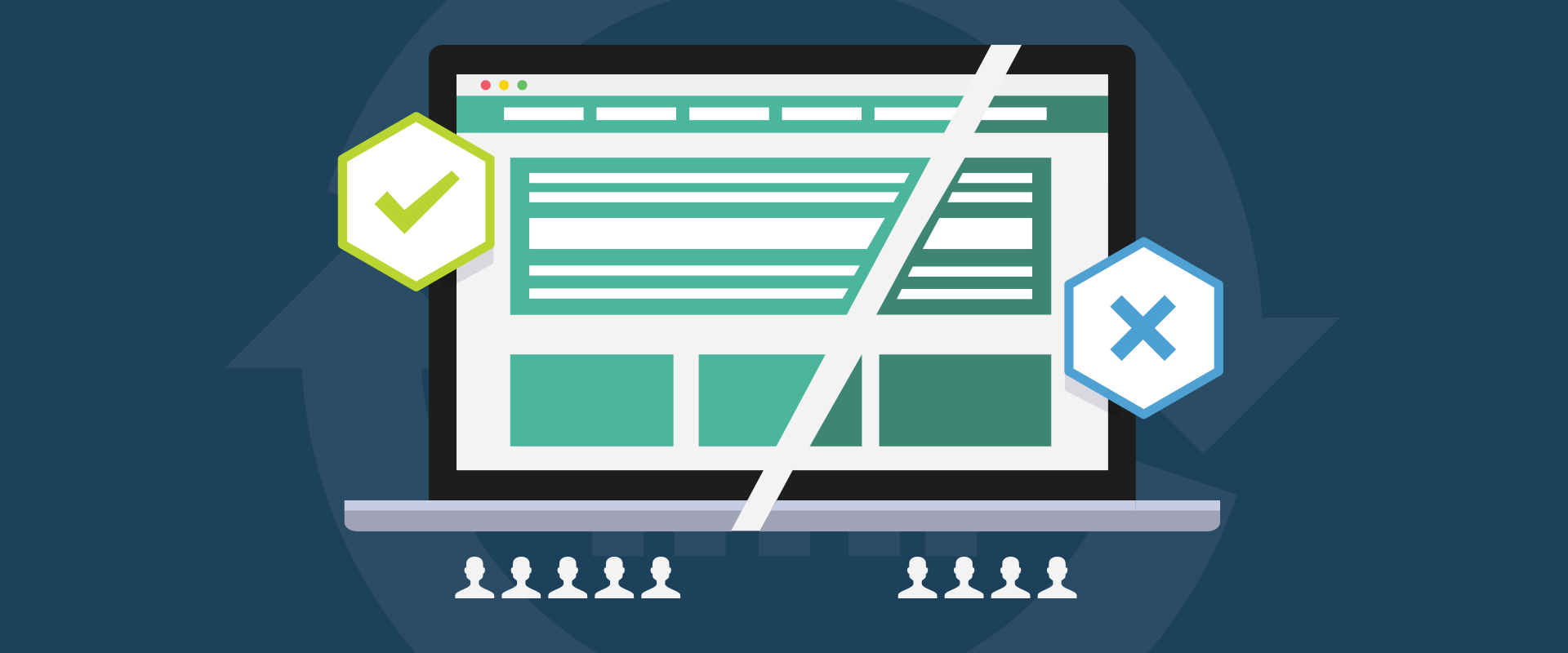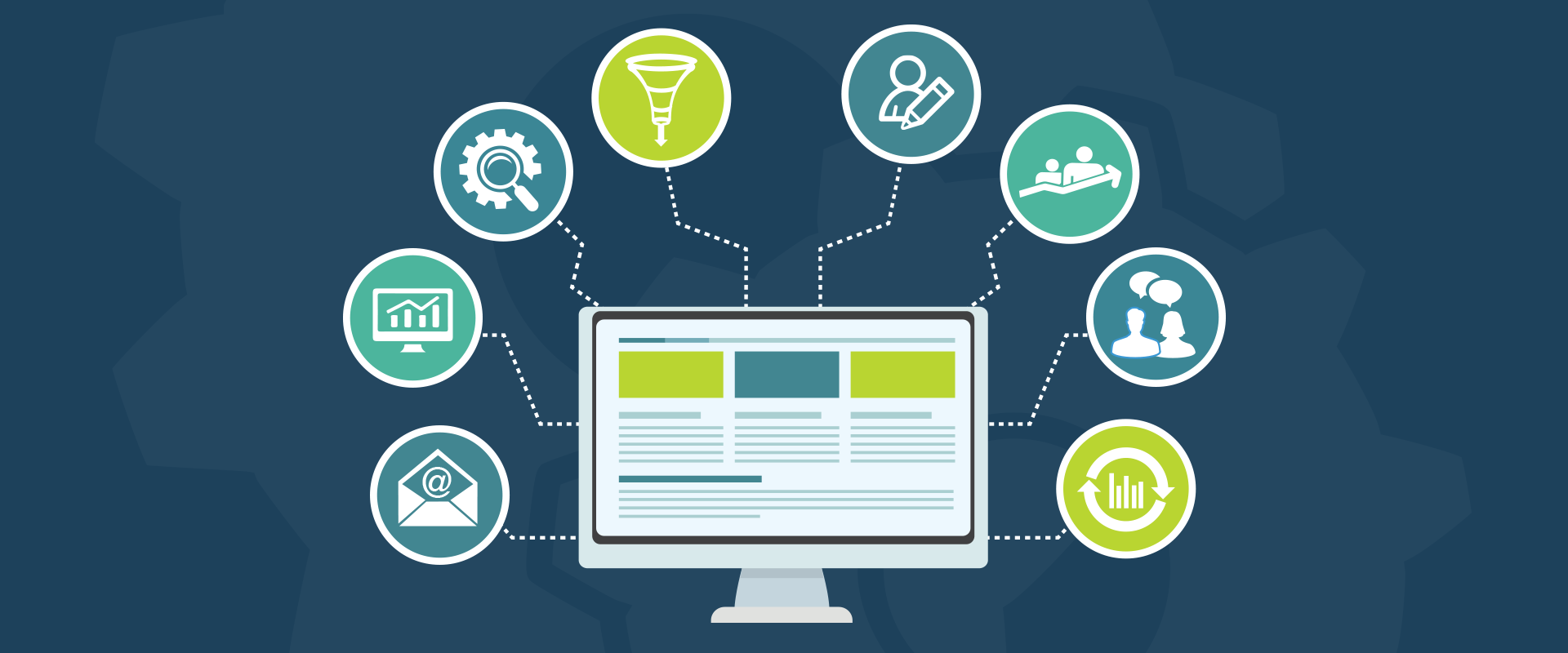CHAPTER
02
Developing a Content Marketing Strategy
It’s a big promise: perfect content marketing.
But it is possible if you understand how content fits into your overall digital marketing strategy.
And done right, your content marketing will not only attract prospects, but also move them through a marketing funnel to drive more sales and grow your business.
In this chapter, we cover the basics of a successful content marketing program, including methods and metrics, the business roles that should own your content marketing, and the lingo you’ll use to talk about it.
Methods of Well-Executed Content Marketing
Let's start with a thorough understanding of what we mean when we say content.
You see, most businesses miss out on a lot of opportunities because their vision for content marketing is too small.
As a result, they're churning out content but not getting great results. And here's why: content in and of itself isn't what drives traffic and sales.
Your content needs to be "perfect."
Now, what do we mean by that?
Perfect content isn't about you, your brand, or your objectives. It's about delivering the right information to your prospects at exactly the right point in the customer journey.
For instance, for the software company Freshbooks, this web page represents perfect content marketing for a prospect who needs pricing information to make an informed buying decision.

Content is any information that helps you keep the funnel full.
Yep, a pricing page is content.
The big misconception is that content marketing is blogging.
While blogs are a major component of content marketing, they’re only a part of the bigger picture. In fact, in most cases, a blog is not the most lucrative form of content marketing.
But we’ll come back to that.
First, let’s get clear on the six characteristics of perfect content marketing and why it’s essential that you get started.
(NOTE: At the end of this chapter, you’ll get access to a tool we use to make perfect content planning a breeze.)
1. Perfect Content Marketing is Full Funnel
I know this is Marketing 101 stuff, but stick with me for just a second before I get into the more advanced content marketing concepts we’ll be covering.
For an ice-cold prospect to become a customer, they will need to travel through three stages:

The 3 stages all prospects go through on their way to becoming a customer.
- Awareness – The prospect must first become aware that there is a problem and that YOU or your organization have a solution for it. (This is where your blog excels.)
- Evaluation – Those who move through the Awareness Stage must now evaluate the various choices available to them, including your competitor’s solutions and, of course, taking no action at all to solve the problem.
- Conversion – Those that move through the Evaluation Stage are now at the moment of truth—purchase. At DigitalMarketer, our goal at this stage is to convert leads into frequent and high-ticket buyers.
A cold prospect cannot evaluate your solution until they are first aware of the problem and your solution. And conversion is impossible until the prospect has first evaluated the possible courses of action.
To move a prospect through a marketing funnel, you need to give them content specifically designed to satisfy their needs at each of the three stages.
In other words...
- They need content at the top of the funnel (TOFU) that facilitates awareness.
- They need content in the middle of the funnel (MOFU) that facilitates evaluation.
- They need content at the bottom of the funnel (BOFU) that facilitates conversion.
Make sense?
Blogs are fantastic facilitators of awareness, but they do a poor job of facilitating evaluation and conversion. And, at the risk of pointing out the obvious, evaluation and conversion are super critical to your business.
To move prospects through the middle (MOFU) and bottom of the funnel (BOFU) you’ll need other content types.
It looks like this...

We call this The Content Lifecycle.
Let's look at each stage of the funnel and the content needed at those stages...
Top Of The Funnel (TOFU) Content Marketing
The prospects entering the top of your funnel are completely unaware of your solution and, often, completely unaware of their problem.
As a result, you need content with a low barrier to entry—because at this stage, they have little to no motivation to put skin in the game (such as giving your contact information or money).
You need freely available content at the top of the funnel (TOFU) that...
- Entertains
- Educates
- or Inspires
...and you need to make it readily available using content types like:
- Blog posts
- Social Media Updates
- Infographics
- Photographs
- Digital Magazines/Books
- Audio/Video Podcasts
- Microsites
- Print Magazines/Newsletters (You’ll need a bigger budget here.)
- Primary Research
Do you need all of these content types at the top of the funnel?
Heck no.
Most businesses will post content to a blog and to social media channels like Facebook, Twitter, LinkedIn, Pinterest, etc. Once you’ve mastered these two content types, you’ll want to add more top-of-funnel content to the mix, like a podcast or a print newsletter.
Remember, the big goal at the top of the funnel is to make prospects "problem aware" and "solution aware."
Notice how Whole Foods, using their Whole Story blog, raises awareness for a sea scallops offer while providing valuable content (recipes and cooking instructions):

TOFU content raises awareness of your offers while providing valuable information.
At DigitalMarketer we do that by providing educational content our prospects are interested in—and using that content to raise awareness of our training products and services.
(Shhhhh... don’t tell anyone, but this VERY chapter is educating you about the strategy and tactics taught in our Content Marketing Mastery Certification.)
And the good news is it works in any industry for any type of product.
Notice how this kitchen remodeling company uses photographs of remodeled kitchens to make prospects "problem aware" and "solution aware":

With TOFU content, you want to create awareness around problems as well as solutions.
Unfortunately, the top of the funnel is where most organizations begin and end their content marketing efforts.
Smart content marketers know that, with a bit more effort, they can move prospects from awareness to evaluation in the middle of the funnel.
Here’s how it gets done...
Middle of the Funnel (MOFU) Content Marketing
The big goal in the middle of the funnel is to convert "problem aware" and "solution aware" prospects into leads.
Here, we use free content to incentivize prospects to submit their contact information and opt in to receive future marketing.
We call this type of content a Lead Magnet.
Lead Magnets can be...
- Educational Resources (Case Study, White Paper, etc.)
- Useful Resources (Swipe File, Checklist, etc.)
- Software Downloads
- Discount/Coupon Clubs
- Quizzes/Surveys
- Webinars/Events
This is a Lead Magnet that DigitalMarketer uses to generate leads for our products surrounding Facebook advertising:

Lead magnets are free content that incentivize prospects to opt in to your list, becoming leads.
When visitors click on the "Download Now" button, they're prompted to enter their email address to receive the piece of content.
This piece of content (a white paper) from Cloud Margin generates "solution aware" leads...

A white paper or report creates "solution aware" leads.
But you can’t deposit leads in the bank.
A third content type is required at the bottom of the funnel (BOFU) to convert leads into customers...
Bottom of the Funnel (BOFU) Content Marketing
OK, it’s point of sale time.
What types of content will your new lead need to make an informed purchase decision?
Here are a few...
- Demos/Free Trials
- Customer Stories
- Comparison/Spec Sheets
- Webinars/Events
- Mini-Classes
Your lead may be reading your blog and downloading lead magnets (and it will help convert her), but you’ll need content that helps her decide between you and your competitor to move her through to purchase.
Notice how Salesforce supplies leads in the bottom of the funnel with plenty of customer stories to prove that their product can handle that lead’s circumstances...

Customer success stories are smart BOFU content.
Salesforce.com has dozens of these customer stories—one for every major industry, product offering, and size of business.
Customer stories are content that converts, and they are the responsibility of the content marketing team.
Consider this piece of content designed to assist prospective Quickbooks customers in choosing the right solution:

At the bottom of the funnel, prospects are comparison shopping, so comparison sheets make smart BOFU content.
But Quickbooks could earn some points by comparing their tools to their competitors' tools as well. For instance, a Google search suggests that a comparison sheet between Quickbooks and their competitors (such as Xero) is another piece of content that should be on the radar of the Intuit content marketing team.

Google's suggestions are a good source for content ideas.
And while we’re at it, look at all the bottom-of-funnel (BOFU) content Xero’s content marketing team has built:

Brand comparisons are good BOFU content.
And...

Customer stories are great BOFU content.
And...

The best BOFU content answers last-minute questions and gives prospects a reason to buy.
Is creating top of funnel (TOFU) content on a blog important?
Absolutely.
But failing to build a full-funnel content plan will leave you disappointed in your content marketing results.
2. Perfect Content Marketing Is Intent-Based
Some businesses and marketers get hung up on the wrong metrics, particularly when it comes to their blog.
Take a look at this video to see what I mean:
The key to perfect content marketing is understanding existing intent and anticipating future intent, and then, creating the content “assets” needed to address that intent 24 hours a day, 7 days a week.
In our Freshbooks example, a customer who's deep in the funnel might have the intent to compare Freshbooks to Quickbooks.
This content asset addresses that intent:

To come up with valuable content assets, anticipate current and future needs.
And you’ll have to run paid traffic to your content to maximize your results or you risk leaving money on the table as Molly explains:
The truth is the most lucrative content assets you’ll create (if you have an existing business) are assets that meet intent at the bottom and middle of the funnel. Optimize for this existing bottom and middle of funnel intent before going to work on generating awareness at the top of the funnel with an expensive and time-consuming blog roll out.
That’s not to diminish the power of a business blog. Over the last 24 months, we’ve been adding content assets (articles and podcasts) at the top of the funnel and we’ve increased website traffic (think awareness) by 1053%.
That said, the quick wins in the content marketing game are in the middle and bottom of the funnel.
3. Perfect Content Marketing Is Ascension Focused
Failure to provide an ascension path from every piece of content you create isn’t just bad marketing—it’s a bad user experience.
Smart content marketers anticipate the next logical intent and remove as much friction as possible to create a clear path to conversion.
For instance, let's say I’m shopping for supplies to repaint my kitchen...
In our Freshbooks pricing page example, notice that Freshbooks has created a clear ascension path to a "Risk-Free Trial" of the software.
In blog content, prospects can be given the opportunity to opt-in with their email address to get more information about a topic.
Check out this ascension offer embedded in a blog post. Clicking on this banner ad will take the prospect to a landing page to enter their email address and ascend to a lead:

Ascension offers can be embedded in your blog posts.
They get more information about a topic they are interested in. You get a lead.
4. Perfect Content Marketing is Segmented
You can run surveys and polls until you're blue in the face. But you won’t know what people are truly interested in until they give you their money or time.
When a prospect visits a piece of content (spends time) they have raised their hand and indicated interest. And, because of the magic of ad retargeting you can follow up with these prospects with a relevant ascension offer without even acquiring their contact information.

Retargeting blog visitors can help you create segmented leads.
5. Perfect Content Marketing Is Cross-Channel
Perfect content marketers publish content that meets intent in any channel where groups of prospects are searching for and sharing content including:
- Website/blog
- YouTube
Chances are a single content asset could be published across numerous channels to maximize exposure.
For instance, could that video demo of your product be republished on your YouTube channel like Cuisinart has done here?
(If you’re wondering, "Who in the hell would watch that boring video?" the answer is anyone who is interested in buying a coffee grinder and, particularly, anyone interested in buying THAT coffee grinder. Anecdotally... I bought that coffee grinder after watching that demo just a few weeks ago. The grinder does a great job grinding coffee and that video does a great job at cross-channel content marketing at the bottom of the funnel.)
Can that article on your blog be repurposed as a webinar? Can that podcast become a written article for LinkedIn Pulse?
6. Perfect Content Marketing Is Avatar-Based
Last, but certainly not least, perfect content marketing assets are produced to satisfy the intent of your customer avatars. A content asset can satisfy the intent of multiple avatars or it can be published to target a single avatar.
At DigitalMarketer, for example, we produced an article to raise awareness (top of the funnel) for our marketing certification programs. This article was specifically targeted to our "Employee" avatar who has the intent of acquiring skills that will land them a better job.

Our goal for this article was to raise awareness for our marketing certification programs, so it was targeted to our "Employee" avatar.
Content Marketing Planning: The Content Campaign
To execute perfect content marketing, you need a plan.
At DigitalMarketer, we make this plan at the offer level using a spreadsheet called a Content Campaign Plan.
The planning document includes fields for:
- Marketing Funnel – Is this asset addressing intent at the top, middle, or bottom of the funnel?
- Avatar – Which avatar(s) will this asset target?
- Vehicle – Will this be a text, image, video, or audio asset?
- Channel – Where will this asset be published?
- Ascension Path – What call-to-action will be used in this asset?
The Content Campaign Plan is used to align content marketing with business objectives like generating leads and sales.
It looks like this (I know that’s hard to read, but you can access the template by clicking here).

DigitalMarketer's Content Campaign Plan
Want to create content that converts prospects at all stages of the funnel? Create a Content Campaign Plan and execute on it. It works.
Your Content Marketing Success Metrics
How do measure the success of your content marketing tactics?
Traffic by Channel
At the top of the funnel, design your marketing to raise awareness for your business, brands, and products. Measure traffic from channels like Google, Facebook, and Twitter.
Net New MQL's
Measure the number of leads generated in the middle of the funnel that require further nurturing before they are ready to make a purchase.
Conversion Rate
When content marketing is done correctly, it generates traffic to lead forms and product pages. Measure the conversion rate (Page Visits/Conversions) on lead forms, product pages, and other calls-to-action.
Net New SQL's
Measure the number of leads consuming content at the bottom of the funnel (demos, customer stories, etc.), indicating they're ready to buy.
Relevant Roles in Content Marketing

Who in your organization should be trained in email marketing?
Three different departments should be proficient at and understand the role of email marketing.
Marketing
Content marketing is a foundational discipline affecting your search, social, email, and advertising. Every marketer involved in your digital strategy should be well versed in content marketing.
Sales
According to Harvard Business Review, the average buyer is 57% of the way through the sales process before they engage with a sales representative.
Instead of contacting your sales team your prospects are consuming your content. Sales people who understand content marketing can work in conjunction with your marketing team to create content that closes deals.
Public Relations
The modern-day PR team must understand how the content they produce fits into the larger content, social, and search marketing strategy.
The Lingo You'll Use as a Content Marketer
What are the terms you need to know as a content marketer?
Top-of-Funnel (TOFU) Content
Content designed to raise awareness for your business, brands and products. This content is delivered through a number of channels including blogs, podcasts and video hosting platforms like YouTube.
Middle-of-Funnel (MOFU) Content
Content designed to generate leads and move the prospect through the evaluation stage. Content in the middle of the funnel often takes the form of a Lead Magnet.
Lead Magnet
An irresistible bribe offering a specific chunk of value to a prospect in exchange for their contact information. The goal of the Lead Magnet is to maximize the number of targeted leads you are getting for an offer.
Bottom-of-Funnel (BOFU) Content
Content designed to convert a prospect into a customer by providing the information needed to make an informed purchase decision. Bottom of funnel content includes webinars, product demonstrations, and customer stories.
Summing Up
Content marketing isn't restricted to blogging. You'll probably create tons of blog posts, but if you're strategic, you'll use your blog as just one channel in your content campaigns.
Remember, content marketing works with your other digital tactics in a comprehensive marketing plan designed to move people deliberately through your Customer Value Journey.
Don't forget to download the Content Campaign Plan, which is your best resource for planning content for every stage of the funnel: TOFU, MOFU, and BOFU.
Then, once you've got your content assets built, you're ready to learn how to use digital advertising to drive traffic and conversions.
Become a Content Marketing Specialist
Content marketing is an essential aspect of any modern digital marketing strategy. In this mastery course, you’ll learn to execute a “full funnel” content strategy that transforms ice cold prospects at the top of the funnel (TOFU) into loyal buyers of even your most expensive products and services at the bottom of the funnel (BOFU).
You'll learn:
- How to create your Customer Avatar so you can architect a content strategy that attracts leads and buyers.
- Choose from 12 goals, 16 metrics, and 21 different types of content to create a content strategy that is laser focused on moving the needle for your organization. (Building this content plan is a snap using our Content Marketing Plan worksheets.)
- The “GC = A” Content Marketing Formula that connects the dots between content and sales.
